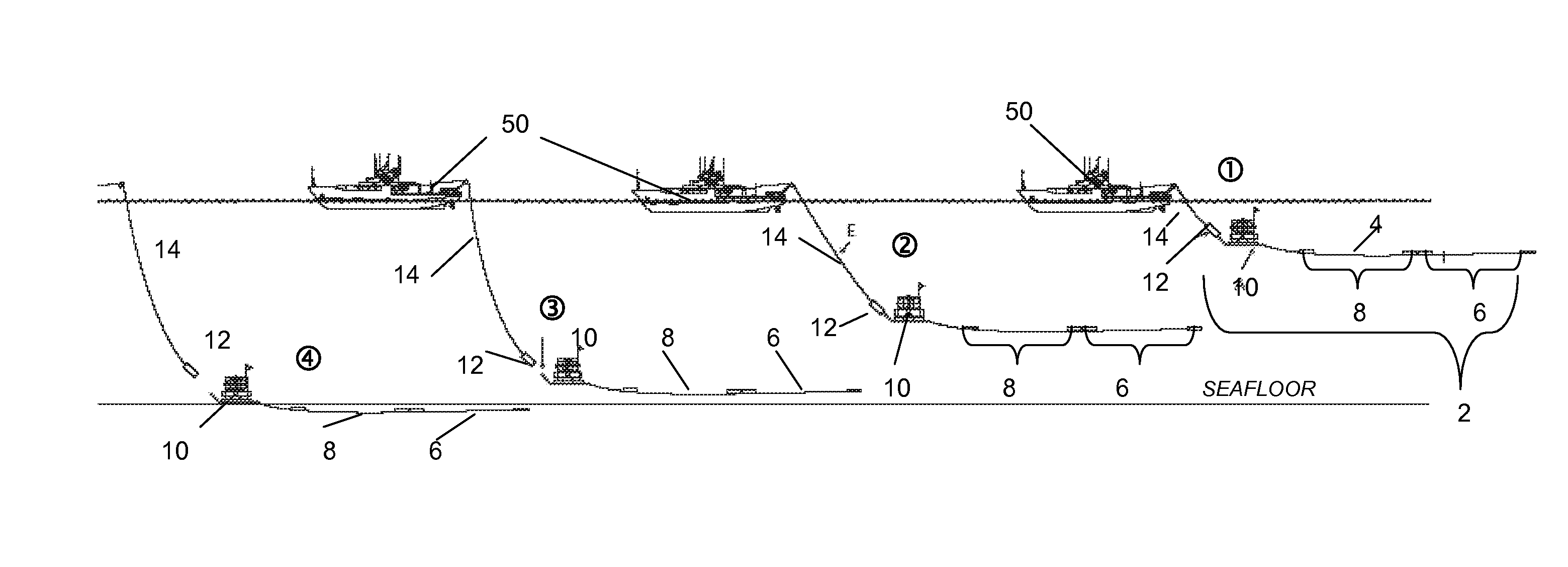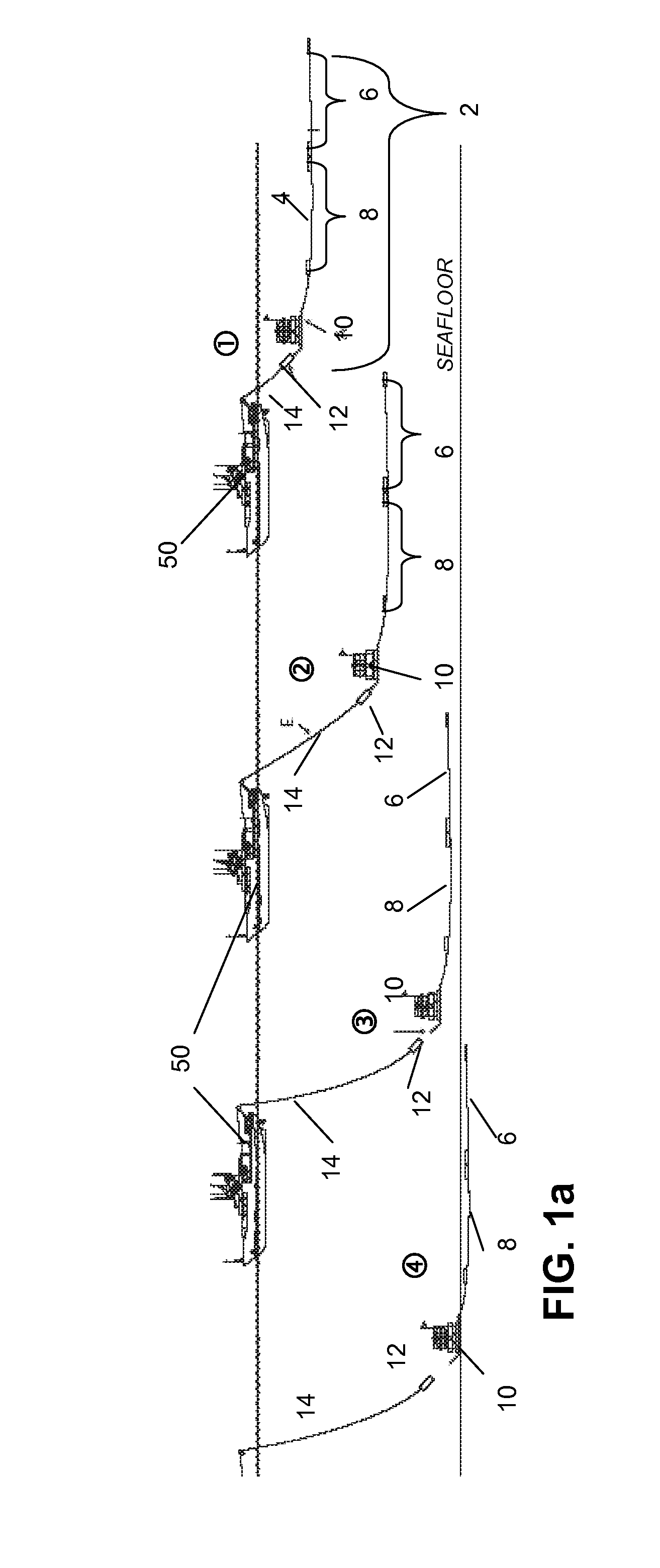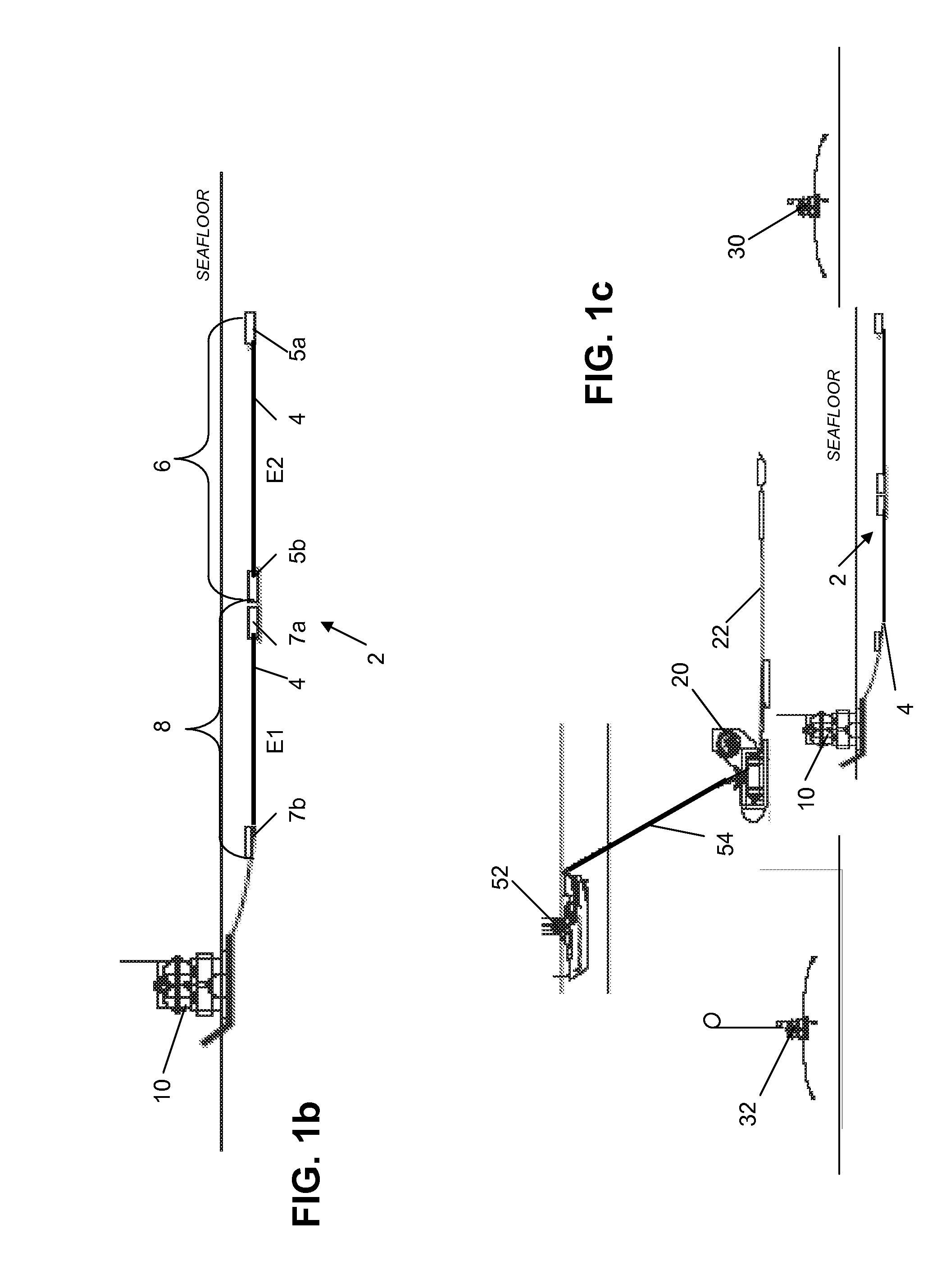Method and System for Detecting and Mapping Hydrocarbon Reservoirs Using Electromagnetic Fields
a hydrocarbon reservoir and electromagnetic field technology, applied in the field of electromagnetic field detection and mapping of hydrocarbon reservoirs, can solve the problems of limiting the detection accuracy of deep resistivity targets, the noise floor of the transmitter/receiver system, and the quality of transmitter waveform stability and navigation, so as to achieve high-precision electric field gradients
- Summary
- Abstract
- Description
- Claims
- Application Information
AI Technical Summary
Problems solved by technology
Method used
Image
Examples
Embodiment Construction
[0024]The present invention extends the capability of marine controlled source EM (CSEM) technology to permit detection of ultra-deep targets (lacking seismic direct hydrocarbon indicators, or DHI's) by improving detection thresholds. Long receiver antennas (LEM instruments) are used to determine the spatial gradient of the horizontal electric fields. An additional aspect of the invention incorporates triangulation techniques using a transmitter mounted long base line (LBL) acoustic system for more accurate source navigation.
[0025]The present invention improves detection thresholds by using long receiver antennas (LEM instruments). With the exception of the magnetotelluric signal, most of the noise sources in the seafloor CSEM receivers are voltage sources, rather than electric field noise. For this reason, improved SNR can be achieved by making the electric field sensor antenna longer. Seafloor recorders with antennae up to 1 km long can be deployed using only one ship. (See, e.g.,...
PUM
 Login to View More
Login to View More Abstract
Description
Claims
Application Information
 Login to View More
Login to View More - R&D
- Intellectual Property
- Life Sciences
- Materials
- Tech Scout
- Unparalleled Data Quality
- Higher Quality Content
- 60% Fewer Hallucinations
Browse by: Latest US Patents, China's latest patents, Technical Efficacy Thesaurus, Application Domain, Technology Topic, Popular Technical Reports.
© 2025 PatSnap. All rights reserved.Legal|Privacy policy|Modern Slavery Act Transparency Statement|Sitemap|About US| Contact US: help@patsnap.com



